NIL
The Tax Implications of NIL By State
How much a player earns in NIL is paramount, but WHERE they receive that payment has massive financial implications. [Sign up for Inside Texas TODAY and get the BEST Longhorns scoop!] As a former resident of California, let me assure you of this. We’ll evaluate two yearly NIL comps, $150,000 and $1,000,000, and place that […]
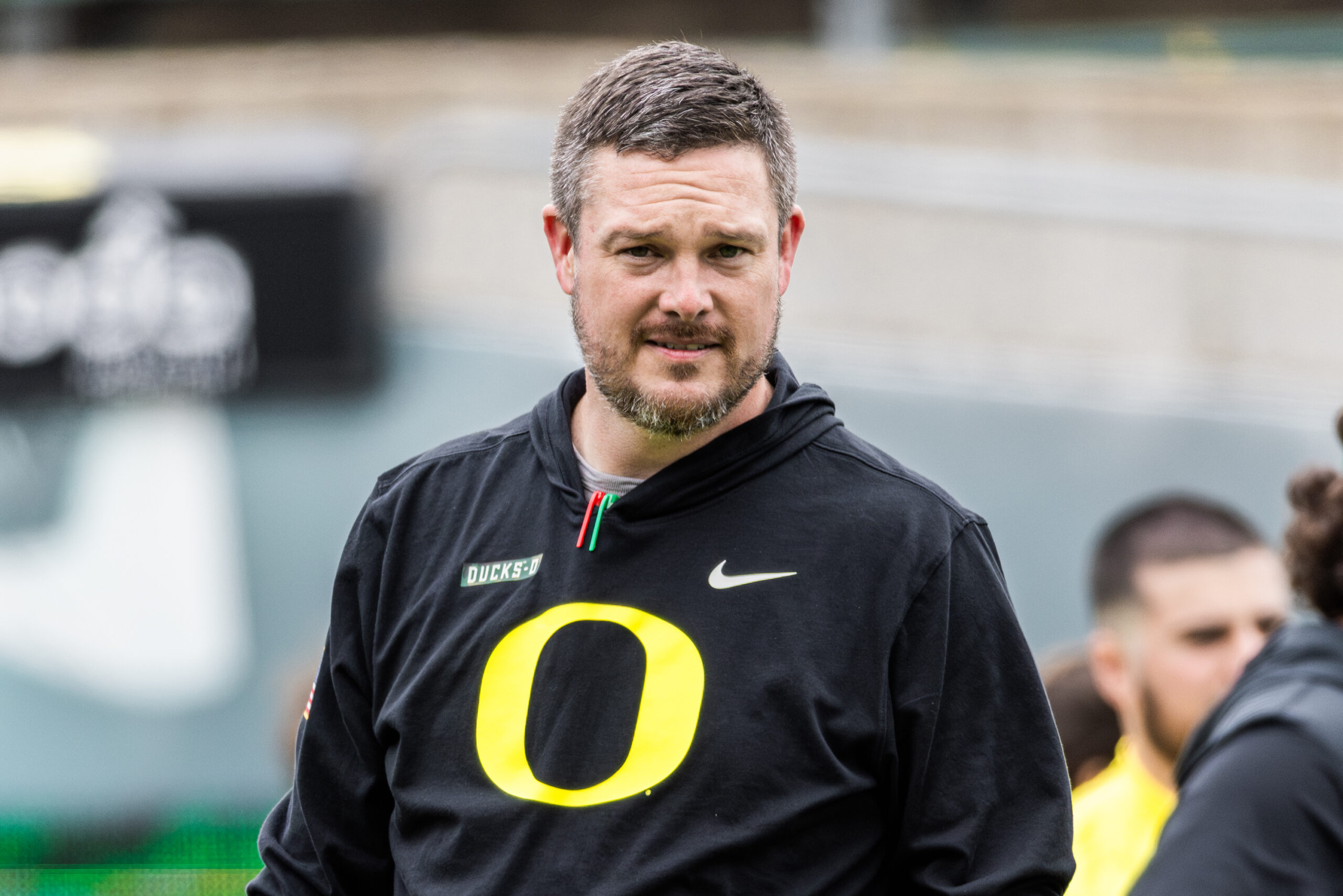
How much a player earns in NIL is paramount, but WHERE they receive that payment has massive financial implications.
[Sign up for Inside Texas TODAY and get the BEST Longhorns scoop!]
As a former resident of California, let me assure you of this.
We’ll evaluate two yearly NIL comps, $150,000 and $1,000,000, and place that player in Austin, Los Angeles, Eugene, Columbus and Athens and see if there are any meaningful tax implications.
$150,000
| Texas | USC | Georgia | Ohio State | Oregon | |
| Effective State Tax Rate | 0% | 6.64% | 4.96% | 2.48% | 8.0% |
| Local Tax Rate | 0% | 0% | 0% | 2.50% | 0.79% |
| Total With Federal | 24.68% | 31.32% | 29.63% | 29.65% | 33.46% |
| Dollar Differential | 0 | 9963 | 7438 | 7467 | 13,183 |
| Sales Tax | 8.25% | 9.75% | 8.0% | 8.0% | 0% |
| Ranking | 1 | 4 | 2 | 3 | 5 |
I bet a lot of you didn’t know that the state of Oregon taxes like North Korea and that those tax rates peak in the tables even earlier than in Trotskyite California.
Oregon pushes their lack of a state sales tax to recruits while hiding the ball on income taxes, but the idea that zero sales tax is a wash vs. a very high state income tax is counting on basic innumeracy.
A high state income tax is 3X to 10X more disadvantaged than the benefits provided by zero sales tax, depending on income and expenses.
The state income tax is with you always and starts at the EARNED DOLLAR, not the SPENT DOLLAR and a $50,000 vehicle is a one time purchase. Your income is a sheep that may always be fleeced.
Any notion of a sales tax offset is particularly spurious for a college football player that has no real expenses beyond their discretionary purchases.
Don’t ignore the sneaky local tax rate in Columbus, OH. It takes some of the shine off of a low state income tax rate.
If a 150K per year player, living the same consumption life, took the $13,183 differential that he pisses away to Oregon taxes and chose Texas or Florida and invested that amount every year for four years, he’d have 1.5 million dollars sitting in an account at age 62 assuming no other contribution made his entire life.
That’s not inconsequential or a rounding error.
Let’s look at a more highly compensated NIL player:
$1,000,000
| Texas | USC | Ohio State | Georgia | Oregon | |
| Effective State Tax Rate | 0% | 10.37% | 3.35% | 5.33% | 9.61% |
| Local State Tax Rate | 0% | 0% | 2.50% | 0% | 0.79% |
| Total with Federal | 35.49% | 45.86% | 41.34% | 40.82% | 45.90% |
| Dollar Differential | 0 | $103,695 | $58,467 | $53,253 | $104,148 |
| Sales Tax | 8.25% | 9.75% | 8.0% | 8.0% | 0% |
| Ranking | 1 | 4 | 3 | 2 | 5 |
As incomes rise, the differences are more stark as you climb the progressive tax tables.
Effectively, you’re throwing away over 100K a year to play at USC or Oregon vs Texas at this comp level.
Take the income tax differential between playing at Texas vs. USC, invest it every year for four years at a 9.5% return, and you’ll have 3.8 million dollars in the bank at age 62 having never put another dime into savings.
If you’re a truly high income NIL athlete, making in excess of 1.4 million dollars per year, California taxes every single dollar over that sum at 13.3% with an additional 1.1% on your payroll tax if you incorporate (and you should).
You’re getting hit with 14.4% state tax rates and giving away half of your money after the Feds take their cut.
Have fun with that.
For the highly compensated athlete, even modest state/local income tax states like Ohio and Georgia mean giving up 50K a season (at 1 million earnings) you’d otherwise save or enjoy.
How about $232,000 towards your (or Mom’s) new house over four years if you chose to play in Gainesville or Austin rather than Columbus?
Needless to say, schools in Texas and Florida are massively advantaged.
My question is whether those schools are adequately emphasizing the difference?
The “same offer” from USC, Oregon or Texas for a coveted five star or portal transfer is actually Oregon and USC trying to acquire that player at a steep discount.
Ultimately, athletes should choose the best overall fit, but at minimum, these considerations are a hell of a tie breaker.
NIL
Two college football powerhouses in intense battle for $155,000 prospect
The Ohio State Buckeyes are fresh off a College Football Playoff national championship win over the Notre Dame Fighting Irish. In turn, the recruiting trail has been busy for head coach Ryan Day and his staff. Now, with the 2025 season still a couple of months away, Ohio State is in the running for an […]

The Ohio State Buckeyes are fresh off a College Football Playoff national championship win over the Notre Dame Fighting Irish.
In turn, the recruiting trail has been busy for head coach Ryan Day and his staff. Now, with the 2025 season still a couple of months away, Ohio State is in the running for an elite prospect.
That prospect is edge rusher Luke Wafle, who is rated as a four-star prospect by On3.
But, Wafle took a visit to USC over the weekend, and all signs pointed to Lincoln Riley beating Ryan Day for the talented pass rusher. That is, until a report from Steve Wiltfong of On3.
“Ohio State upped its NIL offer to become more competitive and keep the blue-chipper close to home. Wafle even informed USC that he was opting to stay closer to home. With that, I moved my expert prediction for Wafle on the On3 Recruiting Prediction Machine in favor of the Buckeyes,” Wiltfong wrote.
Wiltfong then mentioned that USC is increasing its NIL offer in hopes of luring Wafle to Southern California, so it is an intense battle for the edge rusher.
Currently, his On3 NIL valuation is at $155,000, and Wiltfong mentioned that sources suggest Wafle could get a deal of at least $500,000 per year.
This is not a meaningless recruit, either. Wafle is the No. 52 prospect in the Class of 2026 and the No. 10 edge rusher in the class, per On3, so this would be a massive pickup for either powerhouse program.
Wafle’s final five was USC, Ohio State, Texas, Penn State and Florida, but the New Jersey native is set to reveal his decision on June 19.
NIL
Sacramento State withdraws from Big Sky as Hornets move forward with risky bet on future FBS football success
Sacramento State has informed the Big Sky Conference of its intention to leave starting June 30, 2026, the league announced Thursday. The Hornets are expected to announce a move to the Big West for every sport but football starting July 1, 2026. The move will leave the Hornets without a football conference home starting next […]

Sacramento State has informed the Big Sky Conference of its intention to leave starting June 30, 2026, the league announced Thursday. The Hornets are expected to announce a move to the Big West for every sport but football starting July 1, 2026. The move will leave the Hornets without a football conference home starting next year as the school waits for final word on its waiver application to reclassify as an FBS school next season.
The waiver is tied to the NCAA’s “bona fide invitation requirement,” which sets an FBS conference invitation as a prerequisite for reclassification. The Hornets currently do not hold a conference invite, and would compete as an independent should they move up.
The FBS Oversight Committee recommended denying the waiver request last week, with the Division I Council set to make a final decision in the coming days. So what’s at sake for the Hornets? And how did they get to this point?
The big bet
Last year a prominent group of Sac State boosters formed the “Sac12” — an organization dedicated to raising the athletic department’s profile to a point it can earn a Pac-12 invitation in the future.
According to the group’s website, its goals include:
- Securing $50M in NIL commitments to cover the first 10 years in the Pac-12.
- Securing funding and approvals to build a football stadium that seats at least 25,000 attendees.
- Securing funding and approvals to build a basketball arena that can seat at least 6,000 attendees.
- Turning out at least 15,000 attendees per home football game for the remainder of the season
- Securing $5.25 million in conference fees for NCAA re-alignment into the Pac-12.
Taking the first toward these goals, the school announced construction on a new football stadium — set to open in 2026 — along with renovations to its basketball arena.
The athletic department placed a heavy bet on reclassifying with splash offseason hires for both the football and basktball programs. The school tapped Brennan Marion as its football coach, an up-and-coming coordinator from UNLV who drew interest from several FBS schools with coaching vacancies this past offseason. On the basketball side, the Hornets turned to former NBA All-Star Mike Bibby to to lead the team.
The moves certainly built some buzz around the football program. The Hornets signed an exceptoinal transfer class, headlined by former blue-chip quarterback prospect Jaden Rashada, who is expected to lead Marion’s exciting “Go-Go Offense” in 2025. Overall, the Hornets brought in 40 Division I transfers, 29 of which have significant playing time under their belts.
What’s at stake?
Many of Sac State’s strong offseason moves were made under the belief the football team would be playing in the FBS in 2026. A source told CBS Sports the program’s football budget is just north of $1 million for next year, but questions remain as to whether booster support can endure a multi-year transition process.
There’s also a strong chance several of the Hornets’ high-profile transfers could search for greener pastures after this season rather than toil away in the FCS ranks again in 2026.
As mentioned above scheduling would be complicated. While Marion told CBS Sports earlier this spring that the Hornets had an independent schedule ready for the 2026 season if the waiver was approved, compiling an FCS independent slate would be a much more difficult endeavor. The Hornets only have two opponents (Lamar and Fresno State) set for the season.
FBS schools are only allowed to count one FCS team per season toward bowl eligibility, and those opponents are usually set years in advance. The Hornets could be forced into buy games from Division II opponents, which would not only drain funds but further dampen positive momentum the school has made with its donor base.
What happens next?
Sacramento State’s waiver is tied to a similar move made by Liberty in 2017. The NCAA granted the Flames’ waiver, allowing them to play an independent schedule from 2018-22 before the program joined Conference USA.
The NCAA Oversight Committee was not swayed by the argument, pointing to drastic changes to the college football landscape over the past eight years.
“Although a waiver of the bona fide invitation requirement was granted in 2017, that decision was made in a different era, under a different set of facts and rules,” the council wrote in its waiver denial. “The Division I membership adopted the current legislation to affirm the importance of the nature and purpose of the subdivision reclassification process, choosing to place that decision-making authority with the council.”
On Wednesday, Sacramento State president Luke Wood penned a letter in response to the oversight committte’s statement:
This week, an NCAA committee recommended against granting Sacramento State a waiver to join FBS as an independent. We remain hopeful as the D1 council has the ultimate decision and authority. The rationale, that a lack of a conference invite ‘signals readiness,’ is flawed.
In a normal situation this rationale would make sense, except for we are located in a part of the country that has limited FBS conference options. The only reason we don’t have an invite is geography. Multiple FBS commissioners and presidents who are outside our region have told us directly they would welcome Sacramento State, but cannot make the travel work. Geography should not be a deterrent when a university is in a unique geographic situation. The last West Coast school to make the leap was Boise State, nearly 30 years ago.
A conference invite is not the right benchmark. Readiness is measured by investment, infrastructure, and commitment and Sacramento State exceeds the standard. Liberty University was (relatively) recently granted approval to make the same transition but we are now being told ‘that was a different time.’
The fate of the football program now rests in the hands of the NCAA Division I council. A waiver would keep the Hornets’ ambitious plans on track, while a denial would could drastically affect the athletic department’s timeline.
NIL
James Franklin predicts how enforcement will change under College Sports Commission
After receiving long-awaited approval, the House v. NCAA settlement is now beginning its implementation process. The College Sports Commission is also now part of the landscape, tasked with enforcing key terms of the agreement. The newly formed entity – led by former Major League Baseball executive Bryan Seeley – will take the lead on enforcing […]

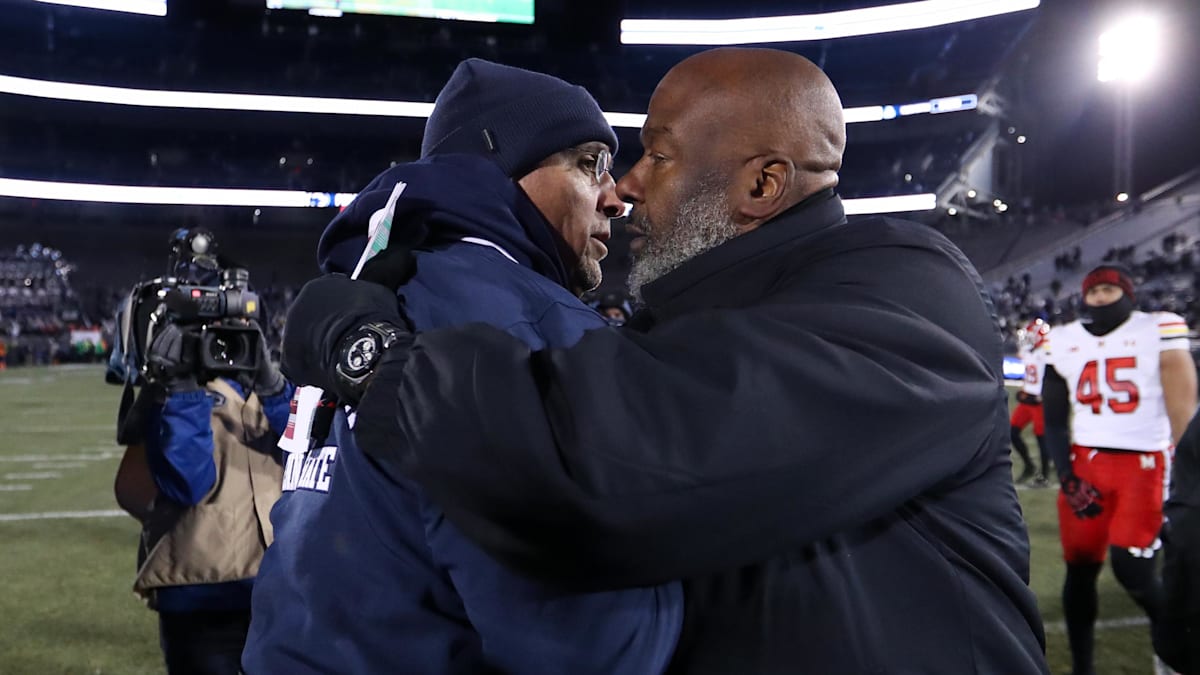

After receiving long-awaited approval, the House v. NCAA settlement is now beginning its implementation process. The College Sports Commission is also now part of the landscape, tasked with enforcing key terms of the agreement.
The newly formed entity – led by former Major League Baseball executive Bryan Seeley – will take the lead on enforcing rules in place under the settlement. Once Judge Claudia Wilken granted final approval, the commission launched and named Seeley as CEO shortly thereafter.
Penn State coach James Franklin previewed what the new enforcement model will look like. He acknowledged there could be some bumps in the road, but he’s hoping for a more streamlined process when it comes to making decisions.
“This is not going to be one of these things that we’ve all kind of grown up with under the NCAA where it goes on for two years and a lot of times, the coach is gone and the next coach is coming in and having to deal with it. … This is going to be something where decisions are going to be made and made swiftly,” Franklin told Urban Meyer on The Triple Option. “Very similar to, I think maybe a Major League Baseball model, an NFL model, is what they are trying to bring to college football.
“So I think in theory, I think you’ll like what they’re trying to do. As we both know, the theory of it and the reality are two different things, and there’s going to be some growing pains as we work through it. I’m hopeful.”
James Franklin: ‘I’m still learning every single day’
While the College Sports Commission will not replace the NCAA as far as enforcement goes, its key tasks will center around the House settlement. Topics such as revenue-sharing, roster limits and the new NIL Go clearinghouse will fall under its purview, and Bryan Seeley brings a strong investigative background from his time in MLB as executive vice president of legal and operations.
Documents also showed some of the policies in place by the CSC, including membership. The agreements spell out that institutions must waive their right to sue the commission, and schools could risk being kicked out if they don’t sign.
While James Franklin has not yet seen those specific documents, he pointed out the importance of signing. He also acknowledged the implementation committee in place to help lead the charge into the post-House world.
“Even when we were at Big Ten meetings, that still [was not] something that was out there for all of us to see, that they’re still working through the details,” Franklin said. “I think a lot of this, they were waiting until the judge formally made the decision. And then, there’s the implementation committee – partly from the NCAA, commissioners, athletic directors, that are part of implementing, basically, the House rules. And it’s going to go from there.
“We’re still learning, I’m still learning every single day and getting more information. But what has been explained to me, I think they’re hopeful, is the best way to describe it, that we can move in this direction.”
NIL
ESPN confirmed Oklahoma owns the most unbeatable record in college football history
We’ve all heard numerous times in our lifetime that records are made to be broken. It’s just the nature of progress. But just the same, there are some achievements that will likely stand the test of time, and the Oklahoma football program lays claim to several of them. Chris Lowe and some of his colleagues […]
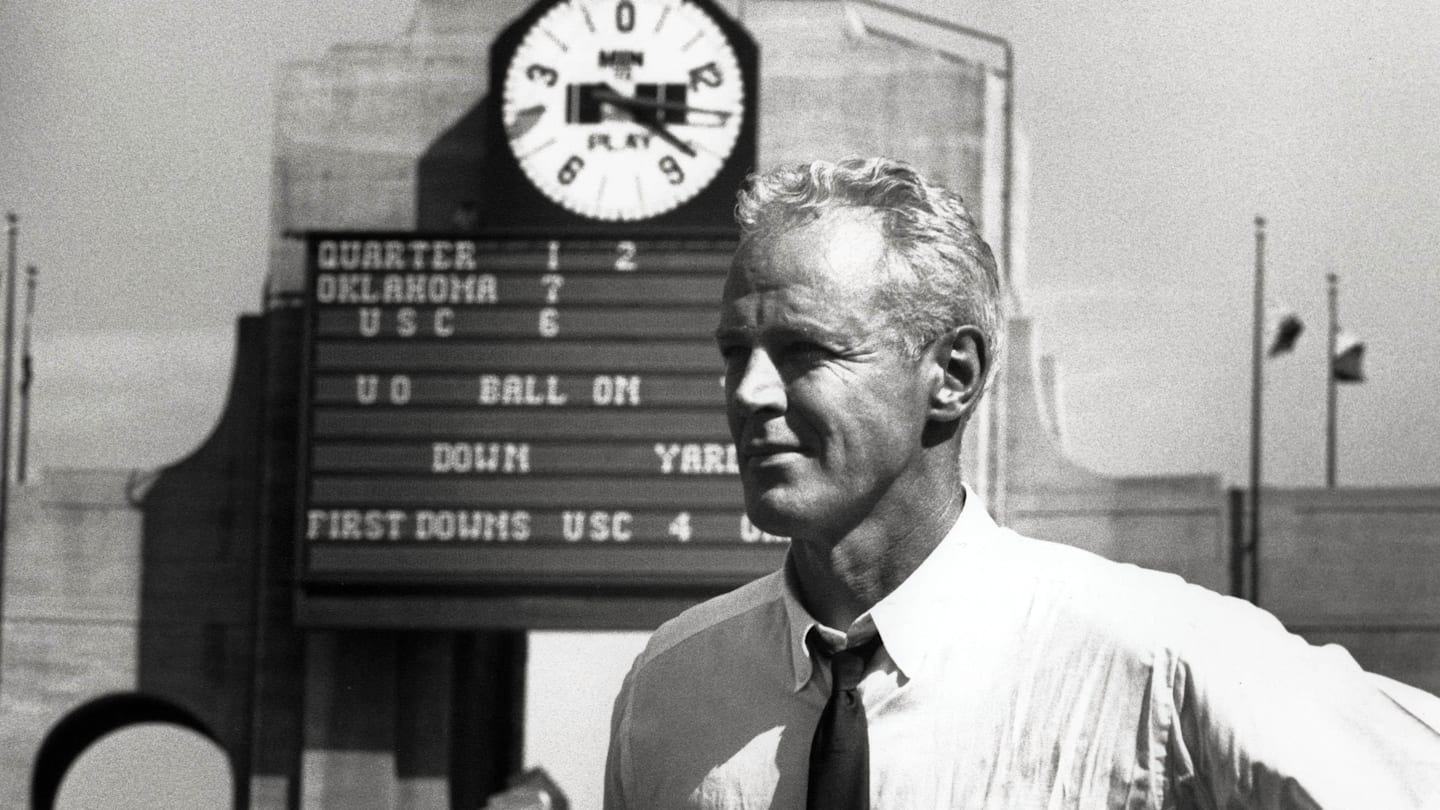
We’ve all heard numerous times in our lifetime that records are made to be broken. It’s just the nature of progress. But just the same, there are some achievements that will likely stand the test of time, and the Oklahoma football program lays claim to several of them.
Chris Lowe and some of his colleagues at ESPN took a look back over the past 75 years of college football, back to 1950 and the beginning of what’s called the modern era of college football, and came up with a list ranking what they consider to be the 10 most “unbreakable” records in the sport, which included three OU records.
“In every sport, there are hallowed records, dubious records and records that are seemingly unbreakable,” wrote Lowe in the article this week. “Some good, some not so good.”
Oklahoma owns several of college football’s most unbreakable records
Oklahoma’s remarkable 47-game winning streak, achieved from the third game of the 1953 season through the seventh game of the 1957 season, topped the list. The Sooners lost 7-0 to Notre Dame on Nov. 16, 1957. It was their only loss that season. Said another way, that was 1,499 days (more than four years) without a loss.
You have to go back more than 100 years (Washington with 40 from 1908 to 1914) to the next closest to Oklahoma’s 47-game record. Since 1950, though, the longest win streak recorded was 34 by Toledo in 1969-71 and 34 by both Miami (2000-02) and USC (2003-05).
The Sooners also ranked No. 4 and No. 7 on the list of ESPN’s 10 most unbreakable college football records and were part of another record performance belonging to former Texas Tech quarterback Patrick Mahomes, which sat at No. 9.
At No. 4 was Oklahoma’s 1971 team, which in the second season of its vaunted Wishbone offense averaged a record 472.4 rushing yards per game. To illustrate how truly special that was in comparison to today’s college game, only four teams averaged more than 250 yards rushing in the 2024 season. The 1971 Sooner team averaged 45 points a game and lost just once that season, 35-31 to No. 1 Nebraska in the much ballyhooed “Game of the Century.”
OU’s Antonio Perkins amazingly returned three punts for touchdowns in a 2003 game against UCLA. That incredible performance ranked No. 7 on the list. As rare as it is to have a punt returned for a touchdown, it’s almost unthinkable for a player to do it three times in the same game. Perkins’ three punt returns totaled 84, 74 and 65 yards in a 59-21 home blowout against UCLA. In four seasons at Oklahoma, Perkins ended up with eight punts returned for touchdowns, a program record and second-best in NCAA history.
In 2016, Patrick Mahomes and Baker Mayfield, two future NFL quarterbacks, faced off against each other in a classic shootout that produced a combined 125 points and an NCAA Division I record 1,708 yards of offense. Mayfield and OU outlasted the Red Raiders, but it was Mahomes who lit up the scoreboard, as well as the record books, in a performance that ranked No. 9 in ESPN’s list of the 10 most unbreakable records.
Mahomes accounted for a record 819 yards of total offense in the game. He put the ball in the air an incredible 88 times, completing 52 passes for 734 yards and five touchdowns. He also rushed for 85 yards, all while playing the second half with a separated throwing shoulder and a fractured left wrist.
As eye-popping as Mahomes’ stats were in that game, Mayfield, who it should be noted began his career at Texas Tech, produced some impressive numbers of his own, throwing for 545 yards and seven touchdowns.
Read more about OU football
NIL
Elite 5-star WR makes his NIL expectations clear after canceling Alabama visit
Class of 2026 five-star wide receiver Tristen Keys is making waves in the college football recruiting world. The Hattiesburg (Miss.) High School star held offers from Oregon, Michigan, Tennessee, USC, Alabama, Ole Miss, Georgia, Texas and plenty of other schools before committing to LSU. Even though Keys committed to LSU in March, other programs have […]
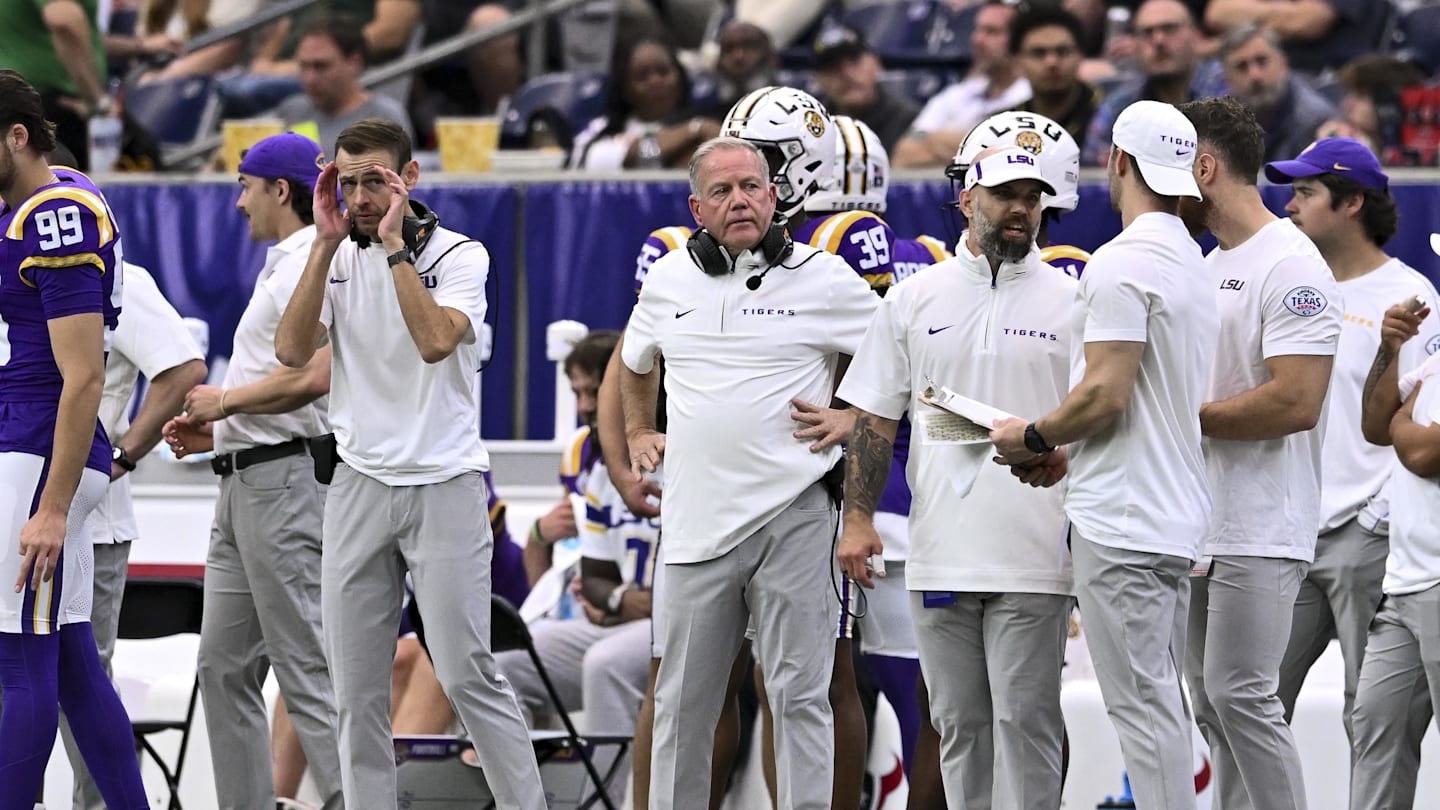
Class of 2026 five-star wide receiver Tristen Keys is making waves in the college football recruiting world.
The Hattiesburg (Miss.) High School star held offers from Oregon, Michigan, Tennessee, USC, Alabama, Ole Miss, Georgia, Texas and plenty of other schools before committing to LSU.
Even though Keys committed to LSU in March, other programs have still been trying to convince him to flip and go elsewhere.
Recently, Keys decided to cancel a visit to Alabama, all but assuring that he is locked into LSU, and he revealed why he did so in an interview with On3’s Josh Newman.
“When it comes to money and development, of course I’d take development first because we trying to get to that big money, which is NFL,” Keys said. “When it comes to 700 to seven figures, and the production is there with the 700, I would take it because I want to be ready and prepared for the next level as fast as possible. So development is #1 for me, for sure.”
Newman said $700,000 would be “market value,” but Keys continued to express he wants to get better and develop to get to the NFL.
“I just feel like choosing development over money is a smart business decision, honestly,” Keys said. “When you get on the field, make plays, more opportunities come.”
Keys recently signed an NIL deal with Adidas, and his NIL valuation prior to that came in at $536,000, per On3. Moreover, Keys was expected to sign a deal somewhere in the $500,000-$1 million range, so there is a chance he gets the best of both worlds in Baton Rouge.
But Keys said time and time again that development is more important to him than a big payday, and taking less money to play more somewhere else is what seems important to the young wide receiver.
NIL
Michigan House rep introduces bill to sidestep NCAA NIL ruling
MSU alum and Michigan House Representative D-9th District Joe Tate introduced a bill on June 12 to limit NCAA regulations on name, image and likeness payments to college athletes. Tate, a defensive lineman at MSU from 2000-2003 and former Michigan speaker of the house, presented HB 4643 to block the NCAA, athletic conferences and universities from interfering […]
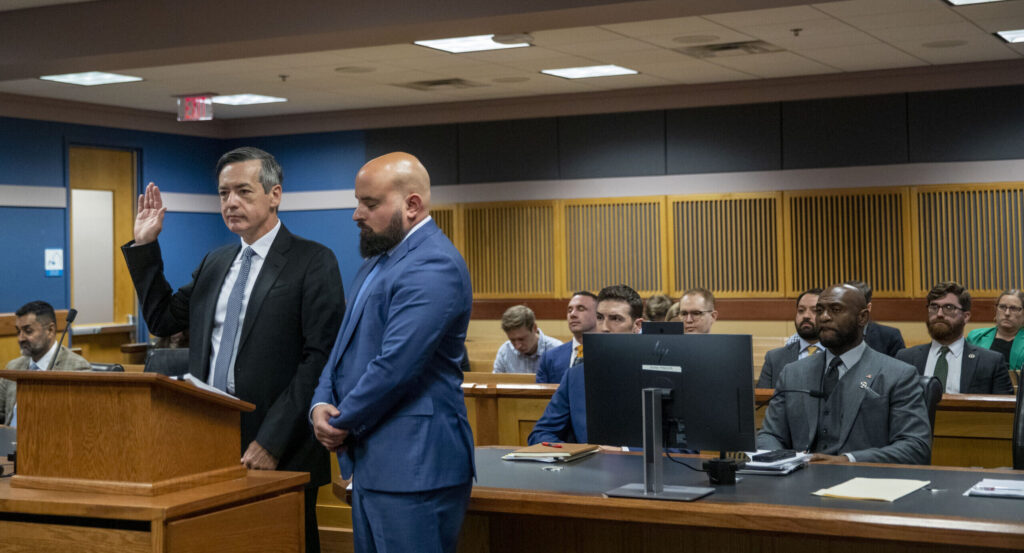
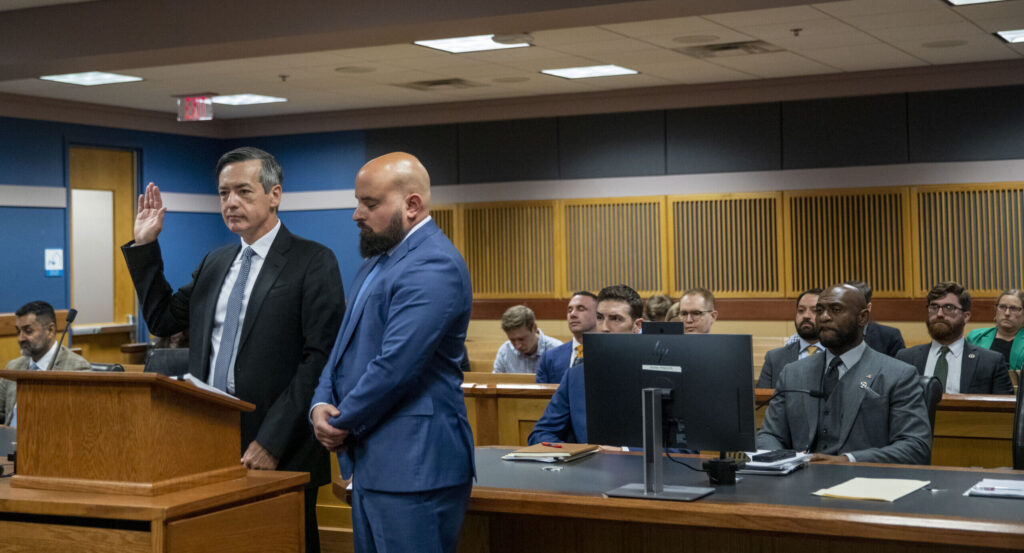
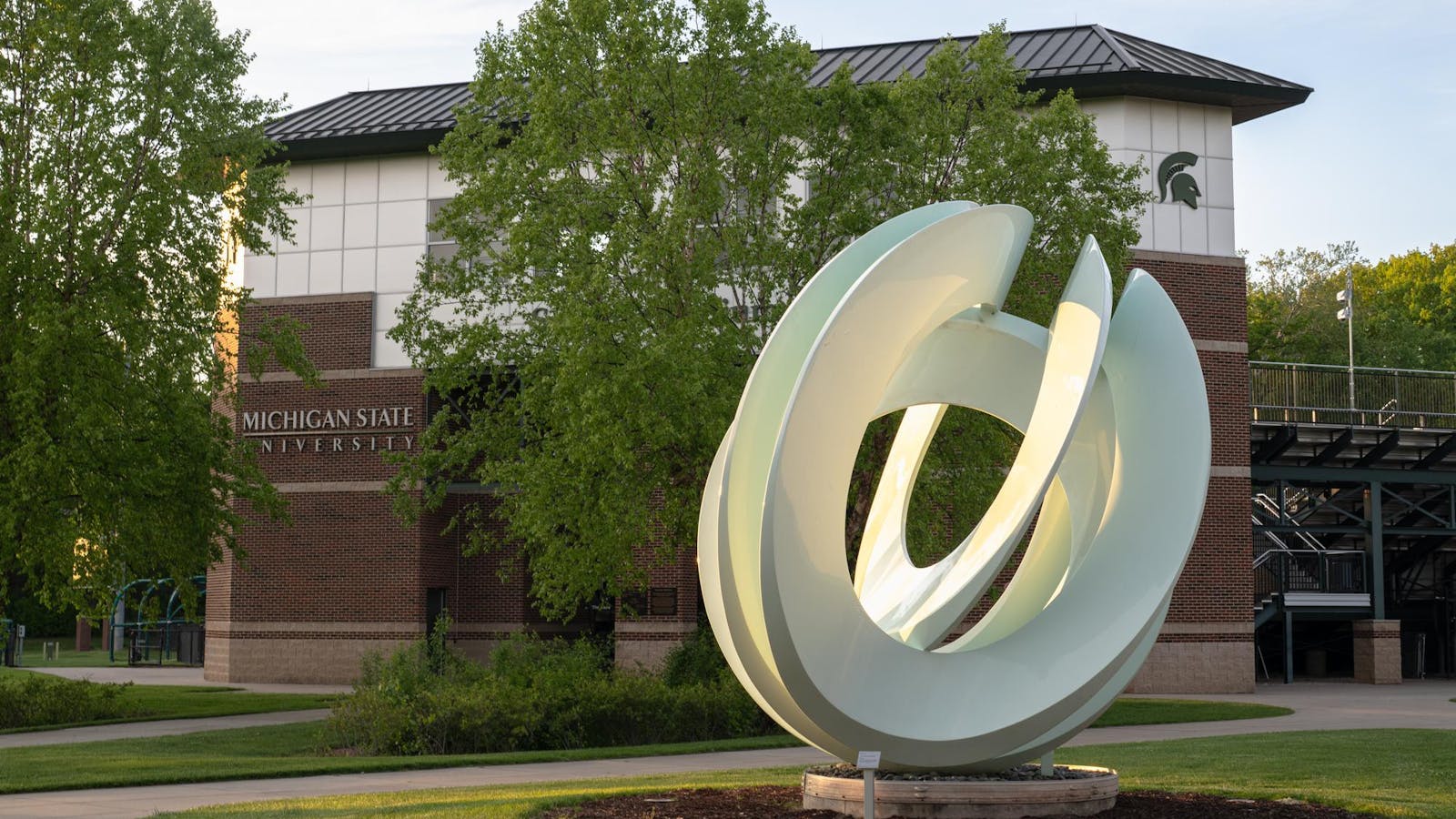
MSU alum and Michigan House Representative D-9th District Joe Tate introduced a bill on June 12 to limit NCAA regulations on name, image and likeness payments to college athletes.
Tate, a defensive lineman at MSU from 2000-2003 and former Michigan speaker of the house, presented HB 4643 to block the NCAA, athletic conferences and universities from interfering with athletes looking to collect on NIL funds.
“There are conflicts with the Michigan statute that we have on the books allowing student-athletes to take advantage of their name, image and likeness while they are at the university that they are participating in and as a student,” Tate said. “It prohibits any entity from limiting a student-athlete’s ability to take full advantage of their name, image and likeness.”
On June 5, a settlement in the House v. NCAA case made way for athletic departments to pay student-athletes directly from university funds, ushering in a new era of NIL in college athletics. The ruling limited the power of third parties and NIL collectives to pay student-athletes.
The bill would circumvent this ruling, allowing athletes and third parties to determine a “fair market value” according to Tate.
In congruence with the House settlement, the NCAA is asking power conferences, including the Big Ten, to comply with the NCAA rules even if it means breaking state laws like HB 4643.
It is unclear how this will unfold between the NCAA and states in the coming months. Industry leaders have called on Congress to enact a law preventing student-athletes from becoming employees and provide the NCAA with antitrust exemptions.
The president of Charitable Gift America and a prominent NIL collective, Dr. Tom Dieters, sponsoring MSU athletes like baseball’s Joseph Dzierwa, said the new bill would allow for athletes to earn compensation without the limits of the university or NCAA.
“The new NCAA rules, and they’re not laws, put a cap on compensation or can even prevent the student from getting an NIL contract altogether,” Dieters said.
MSU tennis standout Ozan Baris said there is an overwhelming amount of uncertainty in the NIL space and stated this bill would put an end to that.
“That’s where NIL is always so beneficial,” Baris said. “It gives me that place where I can play tennis and not have to worry about the financial stress of a financially burdening sport at times.”
Tate has experienced the difficulty of being a student-athlete and states they deserve the same rights that other students receive. “I know the dedication, sacrifices and challenges that come with balancing academics, athletics and personal growth,” he said.
Without the limits imposed by the House v. NCAA case, National College Players Association Executive Director Ramogi Huma said the bill could lead to increased recruiting at universities in the state.
“Student-athletes and their families look at a lot of factors whereas to decide where you go to school,” Tate said. “If Michigan is open for business, for student-athletes being able to take advantage of NIL, I would imagine that would be a tool to attract talent into our universities across the state.”
Support student media!
Please consider donating to The State News and help fund the future of journalism.
Discussion
Share and discuss “Michigan House rep introduces bill to sidestep NCAA NIL ruling” on social media.
-

 High School Sports2 weeks ago
High School Sports2 weeks agoParents Speak Out As Trans Pitcher Throws Shutout In MN State Quarterfinals
-

 College Sports3 weeks ago
College Sports3 weeks agoIU basketball recruiting
-

 Professional Sports2 weeks ago
Professional Sports2 weeks ago'I asked Anderson privately'… UFC legend retells secret sparring session between Jon Jones …
-

 Health2 weeks ago
Health2 weeks agoOregon track star wages legal battle against trans athlete policy after medal ceremony protest
-

 Professional Sports2 weeks ago
Professional Sports2 weeks agoUFC 316 star storms out of Media Day when asked about bitter feud with Rampage Jackson
-

 High School Sports3 weeks ago
High School Sports3 weeks agoThe Arizona Daily Star's top high school athletes, coaches and moments of the 2024
-

 Rec Sports2 weeks ago
Rec Sports2 weeks ago2x NBA All-Star Reacts to Viral LeBron James Statement
-

 Social Media2 weeks ago
Social Media2 weeks agoControversial Athletics Gender Dispute Goes Viral After Riley Gaines Lashes Over Authorities
-

 NIL3 weeks ago
NIL3 weeks agoNCAA Sends Clear Message About Athlete Pay and Roster Limits
-

 Motorsports2 weeks ago
Motorsports2 weeks agoCorey LaJoie to make nine NASCAR Truck Series starts with Spire Motorsports




 ‘WE’RE HUNGRY FOR MORE’ – Breanna Stewart | SC with SVP
‘WE’RE HUNGRY FOR MORE’ – Breanna Stewart | SC with SVP

 #NBAFinals
#NBAFinals
























